Despite pushback from college administrators, Santa Rosa Junior College’s M.E.Ch.A. de SRJC hosted hundreds of high schoolers at its conference, “Persistence through Adversity,” with grace and skill on Friday at SRJC.
More than 550 students from one Contra Costa County and 11 Sonoma County high schools, accompanied by teachers and some parents, spent Friday surrounded by Latino leaders and speakers who shared their strategies for overcoming obstacles to their growth.
M.E.Ch.A. de SRJC spent seven months organizing the event, which offered 23 workshops, a keynote speaker, music and dance, and perhaps most importantly, breakfast treats and lunch for everyone. UC Davis, Humanidad Therapy & Education Services and Lideres del Futuro Avanzando sponsored the conference.
Inexplicably, well after M.E.Ch.A. de SRJC had secured permits for the event in August 2023, the college scheduled the “Reach for Your Dreams” conference to take place the same day during the same hours at the Sonoma State University campus. Both events presented valuable workshops for Latino students, but the simultaneous scheduling meant that students could not benefit from all of the material.
Undeterred, M.E.Ch.A members and advisor Rafael Vázquez Guzmán, SRJC professor of humanities, put on an event that wowed students, parents and high school teachers with its breadth and usefulness.
The event came to life at 8:30 a.m. as dozens of yellow school buses spilled high school students, teachers and parents onto the SRJC campus. Compelled by a rhythmic drumbeat, the energized students walked in a near-continuous flow to the plaza in front of Emeritus Hall.
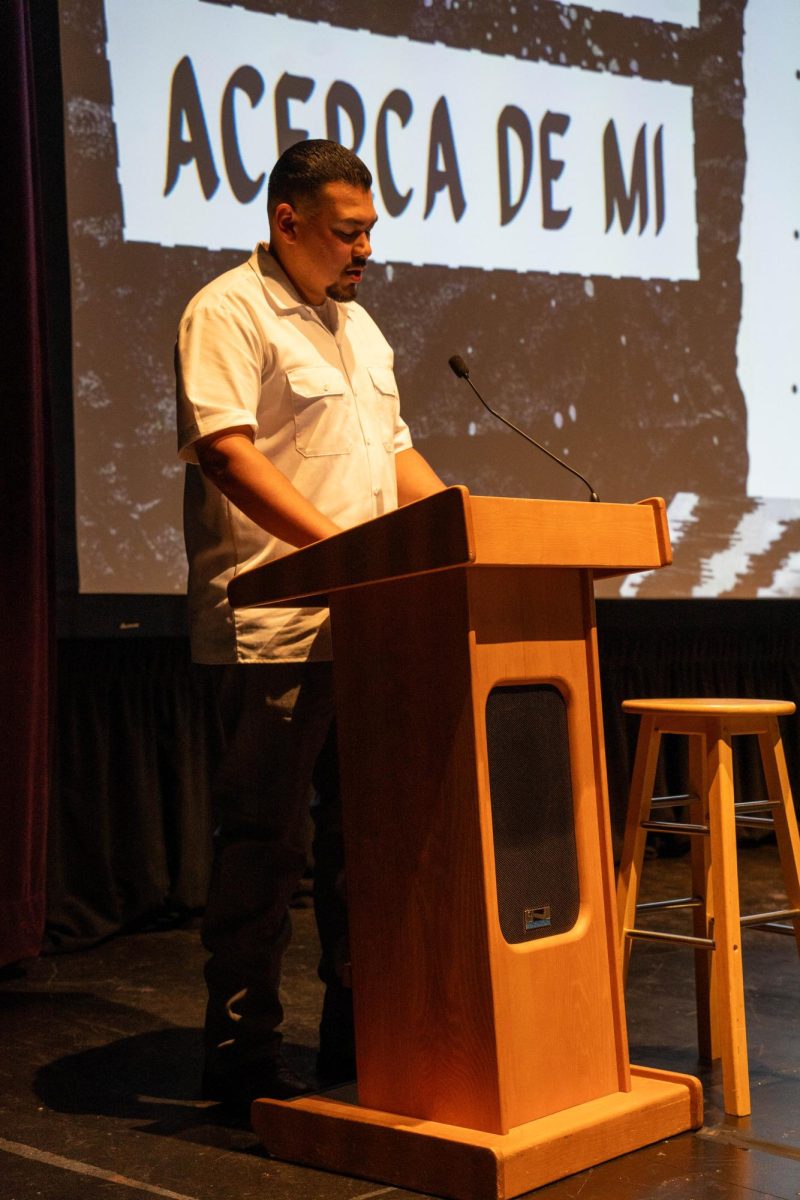
Aromatic smoke of copal resin and throbbing drums greeted the students as they arrived at the plaza, where four dancers from the group Danza Xántotl de Santa Rosa blessed the event with prayer dances. “[We’re here] to inspire, to share a piece of their history and to set up good energy for the day,” Cupertina Escutia said.
As the sun filtered through sparse fog, students clustered, drinking champurrado, creamy spiced hot chocolate, and eating pan dulces, sweet bread. The air hummed with contented conversations as the river of high school students continued to flow into the plaza.
So many students participated that no single auditorium was large enough for the keynote speech by Aarón Solorio, SRJC and UC Berkeley alum and current University of San Francisco graduate student. In his speech, Solorio explained how, despite feeling like an “imposter,” he decided to give the education system a try to see how it works out. “I’ll be honest — I struggled when I first got to Berkeley,” he said. However, he persevered because “I heard the voices of my people in my life to make sure I keep on trying.”
After the keynote speech, students dispersed to workshops of their choice. Most of the 23 workshops were bilingual Spanish and English and offered a broad variety of topics, such as teen dating violence, mental health, immigrant rights in relation to mental health, accessing higher education and best practices when stopped by police as an immigrant. Other workshops focused on health through actions, such as giving or receiving herbal cleanses, and drawing. Several workshops focused on the path to higher education and practical steps for success.
After the keynote, one group of Maria Carillo students headed directly to the “I Am UC Material” workshop presented by Fabian Meneses, assistant director of the Transfer Opportunity Program (TOP) Undergraduate Admissions, UC Davis. Later they planned to attend “Immigrant Rights are Health Rights,” presented by Renee Saucedo, immigrant and workers’ rights community organizer and advocate.
Nadia Solano, traditional yerbera, presented herbal limpia, or cleansing, and curanderismo, or folk healing. She brought with her a large bucket filled with rosemary, pirul — or pepper tree leaves — from her father’s garden, and a basket filled with Meyer lemons from her mother’s garden. She emphasized that students should use what they can gather from friends and family, and not spend a lot of money on herbs. “Not all of us have the resources to go to therapy. This is a way to find what’s around you and heal yourself,” Solano said.
Nearly three dozen students filled the room, all girls save for two boys. Solano grew up in a household she described as “a little bit chaotic.” Her mother suggested she visit her grandmother in Mexico as a way to deal with feelings of depression. While there, Solano learned about earth medicine, or the healing power of plants. She explained how plants represent four elements — earth, fire, water and air — and encouraged students to listen to “plant friends that we can lean on.”
Then, Solano had students choose which plant they would use in a cleansing that she led them through. First, she encouraged students to get to know their plant. In a splash of sun, on a grassy circle, students held their plants next to their hearts and introduced themselves, thanking the plant for being their medicine today.
Next, the students bathed their bodies with lemon, rosemary or pepper tree leaves. Some took the task seriously, others laughed and swatted and, by the end, everyone’s spirits seemed lightened. “You guys are having too much fun. This is supposed to be serious,” Solano said in a joking manner.
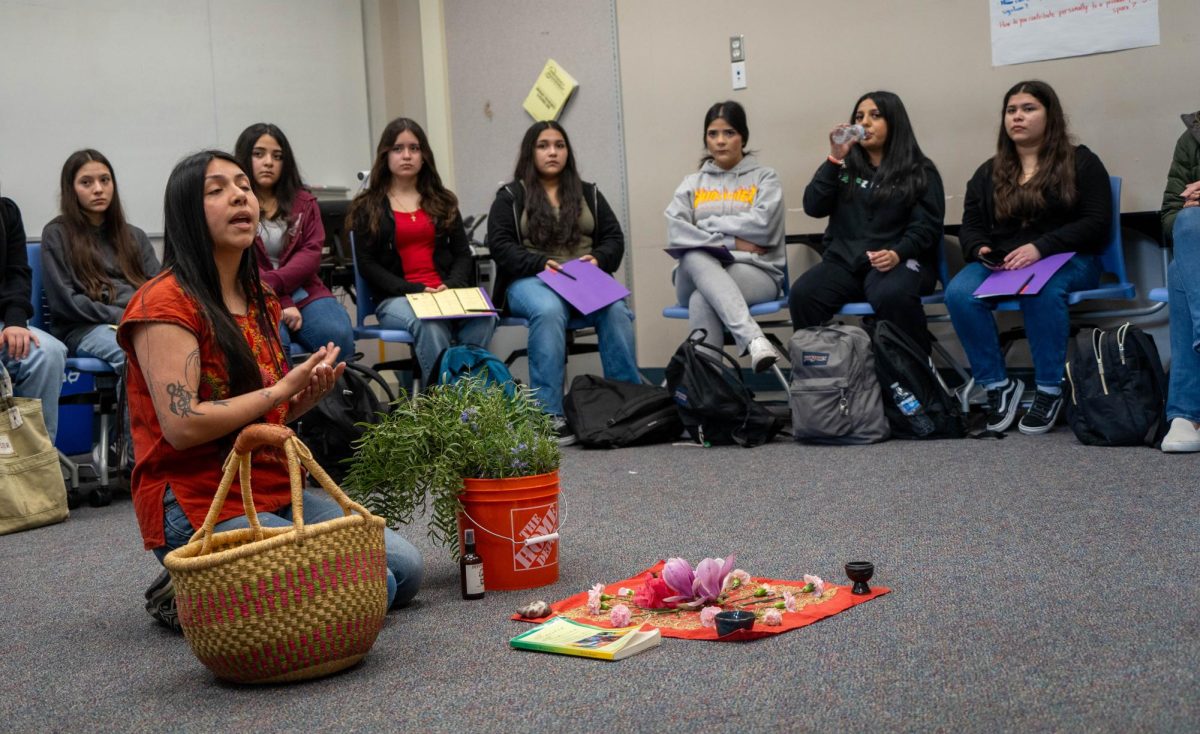
In another classroom, artist Ever Flores led students through an open-ended drawing exercise. In Spanish, Flores invited students to introduce themselves and share their favorite color. Then he passed out paper, gave out pencils and drew basic forms on the whiteboard. A quick sketch to demonstrate perspective, and the students were free to create.
At first, students hesitated but, in the quiet room and with the freedom of a blank page, they grew more confident and began to sketch.
Most began with the basic shape Flores suggested, which grew into myriad images — portraits, urban scenes, stylized lettering, flowers and the ocean. No student’s drawing resembled another’s. This was perhaps the primary, if unspoken, lesson of the workshop: All you need are the basics — a piece of paper, a pencil, simple shapes — for unique creativity.
Flores checked in with each student and offered individualized guidance, from three-point perspective to shading. Piner High School student Elian Herrera, wearing a M.E.Ch.A. shirt he had designed, liked the workshop because Flores “teaches something important with art,” he said.
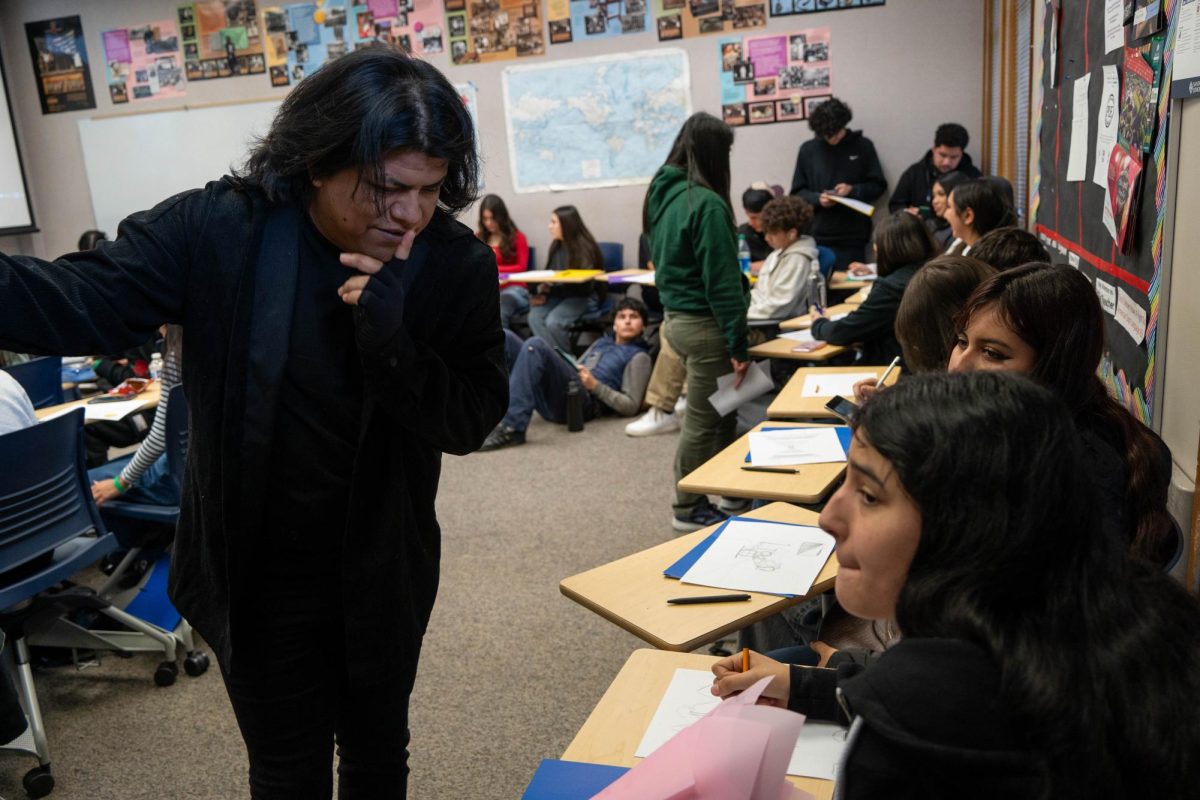
Several students valued the workshop “Unresolved Trauma and the Arrest-to-Deportation Pipeline: Minor Crimes that Have Major Consequences,” presented by attorney Berenice Espinoza. Espinoza described how generational trauma carries down to youth. “It’s something we all go through,” Analy High School Freshman Kimberly Racinos said.
Using events from her own life to illustrate the concept, Espinoza also helped students understand how something that seems small — stealing gum, keeping the cash from a found wallet — can lead to big consequences, such as deportation or jail, for immigrants and undocumented residents. As a pro-bono, bilingual attorney serving Sonoma’s immigrant families, Espinoza passionately supports educating students and their families about their rights as immigrants and undocumented residents, and she made time to meet with parents and students after her workshop.
The club served pizza and salads on the plaza accompanied by music and a collaborative art project. In front of the SRJC Bookstore stood a cube made of industrial plastic wrap. A cardboard box held fat markers. Called “Qu-Vo?” — meaning “what’s up?” — the collaborative art project creates a space for impromptu self-expression. In less than an hour, students covered the cube with vibrant colors and images.
Students felt deeply connected to the speakers and each other because “we’re all immigrants,” Rancho High School Senior Denise Cardenas said. “A lot of people that are young got a lot out of it because it’s coming from other students,” she said.
“It’s such a big event, really useful for all the Latino community,” Maria Carrillo High School Sophomore Juandiego Bueno said. “Some of us have problems, and it’s hard when you come to a new country. You’re an alien,” he said about being a new arrival in a high school class. But today, surrounded by students and presenters like himself, he felt “like [he] had come back to his origins.”
Students found the workshops helpful. “Now I know how to deal with [my depression] better, by not isolating myself from my friends who are trying to help me,” a student from Rancho High School said about one of the mental health workshops.
High school teachers and counselors shared this sense of connection and deep impact. “It’s really great when SRJC holds these events because it allows students to be part of this community where they might not see themselves,” Juan Jauregui, counselor at Windsor High School and adjunct counselor at SRJC, said.
This value extends to the adults as well, Jose Castro, counselor at Piner High School said. He would like to see more events like this, as well as evening events so that more parents and guardians could attend as well.
It’s “crucial” for students at Piner to have the opportunity to come to events like this “because it allows kids to rethink, ‘Hey, I could do this,’” he said. He continued by saying that students do take something from this, big or small.
Latino and Hispanic students comprised 40% of the SRJC student body in 2023-24. The 550 students who attended the M.E.Ch.A conference, “Persistence through Adversity,” are likely to contribute significantly to incoming classes. Several submitted SRJC applications for next year on Friday afternoon, Meneses said. Events like this respond to the whole student, providing art, music and healthy habits in addition to pragmatic higher education and life skills. Neither of the events presented by M.E.Ch.A. de SRJC or the Dream Center could, or should, replace the other. In an ideal world, the college would ensure time and space for both and more events similar to these.
Despite the large number of students, the vibe throughout the day was calm. The hundreds of students mingled, smiled and chatted. There was only one glitch, according to several students from Analy High School: “It went so fast.”




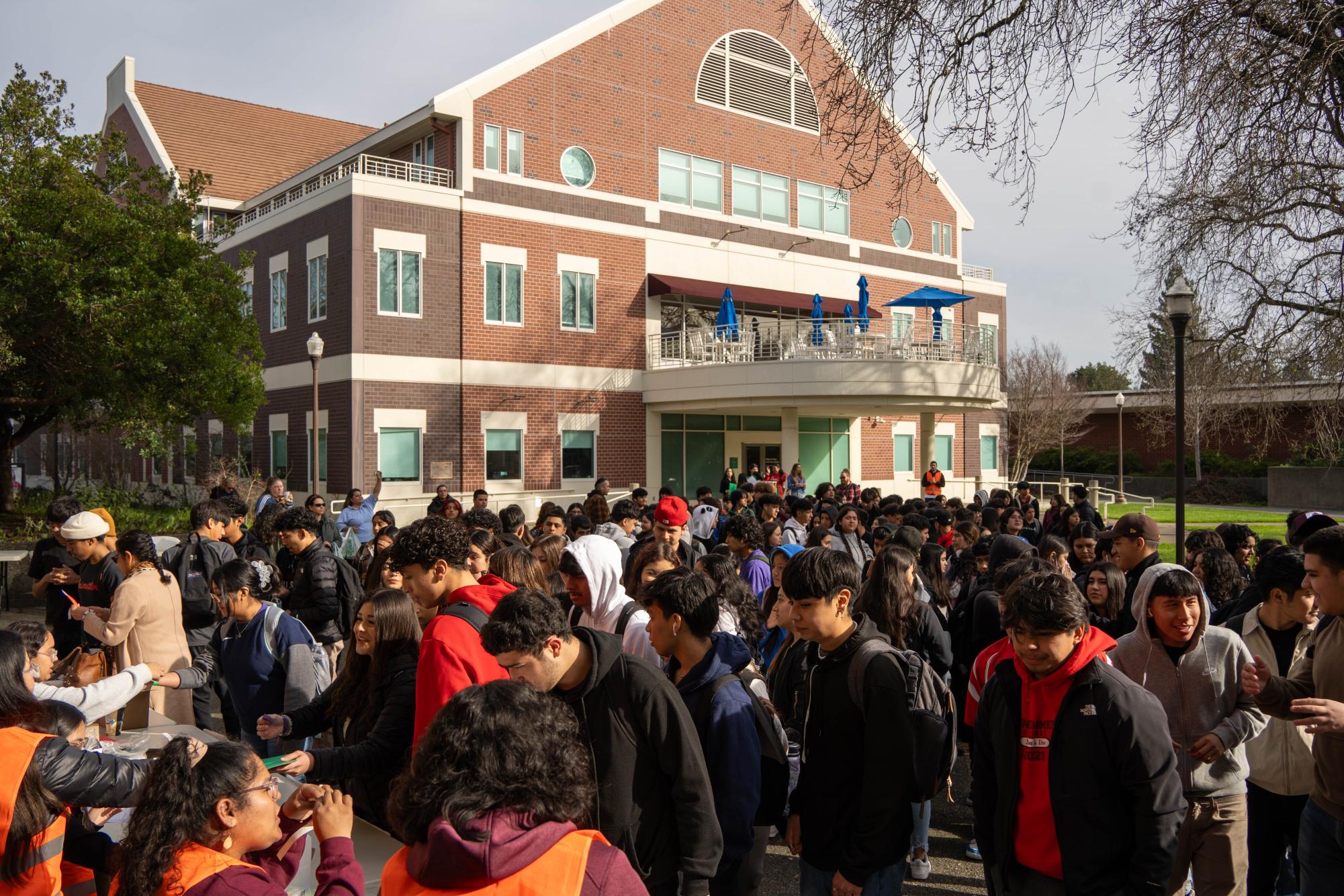
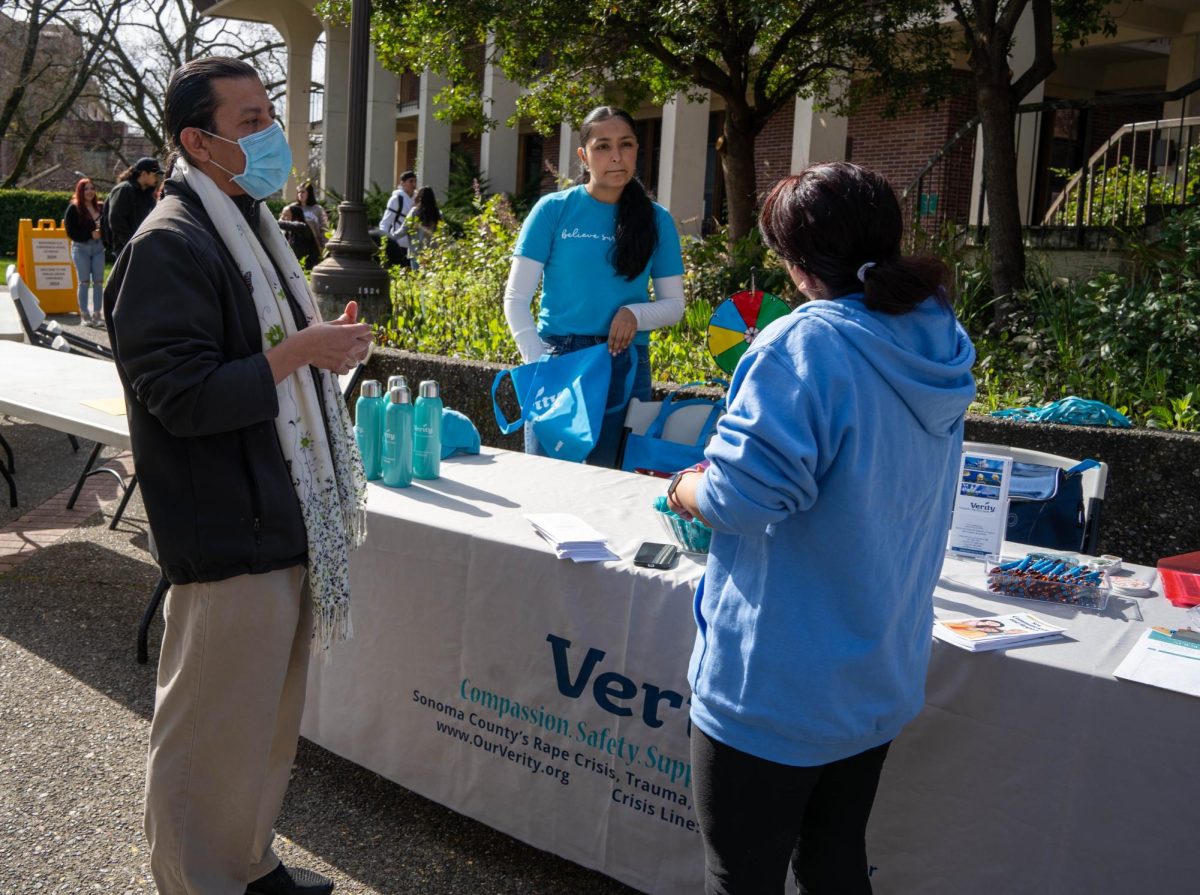
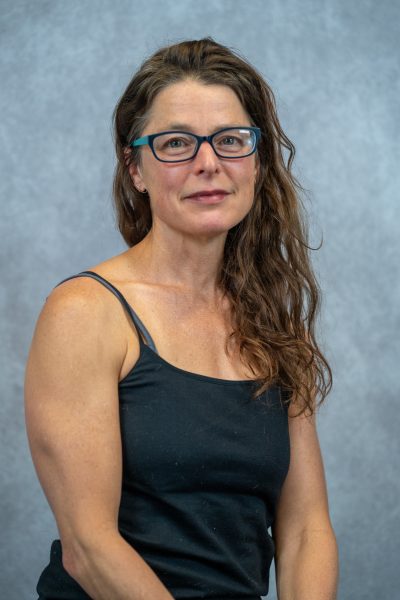
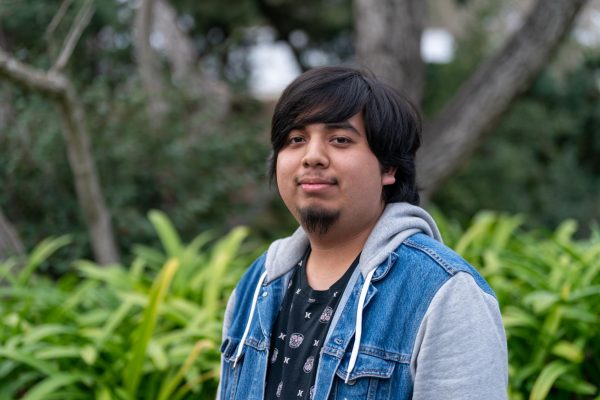
Diana Kingsbury • Feb 27, 2024 at 1:36 pm
Go MEChA!! It was amazing to see the turnout.
Kelly Zamudio • Feb 26, 2024 at 10:57 pm
Thank you for this article!